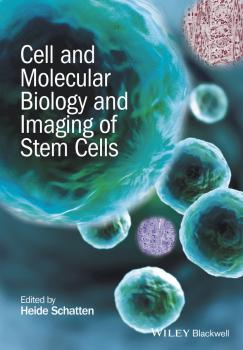ТОП просматриваемых книг сайта:
Heide Schatten
Список книг автора Heide SchattenАннотация
When considering the physiological systems of the body, the degree of species variation within the reproductive system compared to other systems is remarkable. Furthermore, it is essential that researchers, educators, and students alike remain aware of the fundamental comparative differences in the reproductive biology of domestic species. Written by renowned scientists in their respective fields, Comparative Reproductive Biology is a comprehensive reference on the reproductive systems of domestic species. The book offers both broad and specific knowledge in areas that have advanced the field in recent years, including advances in cell and molecular biology applied to reproduction, transgenic animal production, gender selection, artificial insemination, embryo transfer, cryobiology, animal cloning and many others. This seminal text includes topics in animal reproduction that are usually only found as part of other books in animal science such as anatomy, histology, physiology, radiology, ultrasonogrophy, and others. Comprehensive reference of the reproductive systems of domestic species Written by a team of top researchers Richly illustrated throughout, including 12 pages of color images
Animal Models and Human Reproduction. Cell and Molecular Approaches with Reference to Human Reproduction - Heide Schatten
Аннотация
Our knowledge of reproductive biology has increased enormously in recent years on cellular, molecular, and genetic levels, leading to significant breakthroughs that have directly benefitted in vitro fertilization (IVF) and other assisted reproductive technologies (ART) in humans and animal systems. Animal Models and Human Reproduction presents a comprehensive reference that reflects the latest scientific research being done in human reproductive biology utilizing domestic animal models. Chapters on canine, equine, cow, pig, frog, and mouse models of reproduction reflect frontier research in placental biology, ovarian function and fertility, non-coding RNAs in gametogenesis, oocyte and embryo metabolism, fertilization, cryopreservation, signal transduction pathways, chromatin dynamics, epigenetics, reproductive aging, and inflammation. Chapters on non-human primate models also highlight recent advancements into such issues as human in vitro fertilization (IVF) and assisted reproductive technologies (ART). This book offers animal scientists, reproductive biology scientists, clinicians and practitioners, invaluable insights into a wide range of issues at the forefront of human reproductive health.
Аннотация
In vitro fertilization (IVF) and other assisted reproductive technologies (ART) have become a significant part of human reproduction, with already one in 50 children worldwide being born through ART and the demand steadily increasing. To accommodate the various kinds of infertility problems, new methods have been developed to increase IVF and ART success rates and it has also become possible to treat sperm, eggs, and embryos in culture to improve reproductive success, to increase the health state of an embryo, and to prevent disease in the developing child. Human Reproduction: Updates and New Horizons focuses on recent developments and new approaches to study egg and sperm cells and embryo development, as well as addressing the increasing demand for IVF and ART to overcome infertility problems of various kinds that are encountered by an increasing number of couples worldwide. The book includes 10 chapters written by experts in their specific fields to provide information on sperm selection techniques and their relevance to ART; In vitro maturation of human oocytes: current practices and future promises; Molecular biology of endometriosis; Novel immunological aspects for the treatment of age-induced ovarian and testicular infertility, other functional diseases, and early and advanced cancer immunotherapy; Mitochondrial manipulation for infertility treatment and disease prevention; Novel imaging techniques to assess gametes and preimplantation embryos; Clinical application of methods to select in vitro fertilized embryos; New horizons/developments in time-lapse morphokinetic analysis of mammalian embryos; The non-human primate model for early human development; Cytoskeletal functions, defects, and dysfunctions affecting human fertilization and embryo development. This book will appeal to a large interdisciplinary audience, including researchers from both the basic science and medical communities. It will be a valuable reference for IVF clinicians, patients and prospective patients who are considering ART procedures, embryologists, cell biologists and students in the field of reproduction.
Аннотация
Cell and Molecular Biology and Imaging of Stem Cells features original and review articles written by experts who have made significant contributions to stem cell biology and imaging. Chapters cover a broad spectrum of aspects of the field, including Stem cells from the Amniotic Fluid and Placenta, Biomaterials as Artificial Niches for Pluripotent Stem Cell Engineering, Low-Intensity Ultrasound in Stem Cells and Tissue Engineering, Mammalian Neo-Oogenesis from Ovarian Stem Cells, Oct4-EGFP Transgenic Pigs as a New Tool for Visualization of Pluripotent and Reprogrammed Cells, Regulation of Adult Intestinal Stem Cells, Stem Cell Therapy for Veterinary Orthopedic Lesions, Sex Steroid Combinations in Regenerative Medicine for Brain and Heart Diseases, Hair Follicle Stem Cells, The Potential of Using Induced Pluripotent Stem Cells in Skin Diseases, Mitochondrial Differentiation in Early Embryo Cells and Pluripotent Stem Cells, and The Role of Centrosomes in Cancer Stem Cell Functions. Cell and Molecular Biology and Imaging of Stem Cells addresses a wide variety of cell and molecular topics in unprecedented detail, and is a must-read for graduate students and academic and industry professionals in the expanding field of stem cell biology. Reviews new imaging tools and markers for cell and molecular imaging in stem cell biology. Covers novel aspects of stem cell imaging in reproductive biology and stem cell niches Includes chapters on the developing area of centrosome biology as it applies to embryonic and adult stem differentiation




